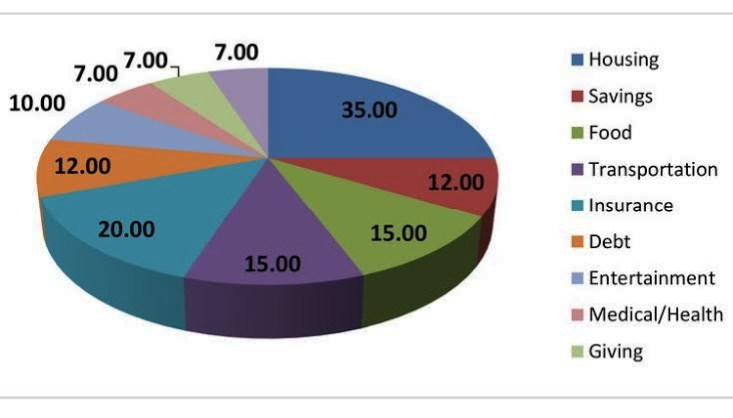Last updated Jul. 29, 2024 by Okechukwu Nkemdirim
Ranked: A Comprehensive Guide
In the realm of online gaming and competitive sports, the term "ranked" has gained significant traction. But what does "ranked" entail, and how does it shape the competitive scene? This article delves deeply into the concept of ranked systems, how they work, their pros and cons, and their pervasive influence.
What is Ranked?
At its core, a "ranked" system is a structured method of competition where participants are assigned rankings or levels based on their performance. These systems are prevalent in various fields, including video games, competitive sports, and professional e-sports. The primary purpose is to create a fair and balanced environment where individuals or teams can compete against others of similar skill levels.
How Ranked Systems Work
Elo Rating
Most ranked systems, especially in gaming and e-sports, employ the Elo rating system. Named after its creator, Arpad Elo, this system was initially designed for chess. It’s based on the principle that every player possesses a certain skill level and that performance variability follows a normal distribution. When two players compete, the Elo system calculates the probability of each player winning and then adjusts their ratings based on the actual outcome.
Matchmaking Algorithms
In online platforms, matchmaking algorithms are integral components of ranked systems. These algorithms consider various factors, such as player skill, latency, and player preferences, to create fair matches. The goal is to ensure evenly matched games, where participants have roughly equal chances of winning.
Types of Ranked Systems
-
Solo Queue: Players compete individually, with their rank reflecting personal performance. This type encourages personal growth and skill development.
-
Team Queue: Players compete in teams, and rankings are determined by team performance. This system fosters teamwork and coordination.
- Seasonal Rank Resets: Many games implement seasonal ranked systems, where rankings are reset after a specific period (e.g., every three months). This motivates players to consistently perform and climb the ranks.
Pros and Cons
Pros
-
Competitive Integrity: Ranked systems uphold competitive integrity by matching players of similar skill levels. This ensures fair and enjoyable competition.
-
Skill Development: Ranked systems provide a clear measure of skill improvement over time. Players can track their progress and identify areas for improvement.
- Motivation: Ranked play motivates players to invest time and effort into mastering their games. Climbing the ranks is often seen as a prestigious achievement.
Cons
-
Stress and Toxicity: High-stakes ranked environments can lead to stress and toxic behavior among players. The pressure to win can result in unsportsmanlike conduct.
-
Smurfing and Boosting: Some players create alternate accounts (smurfs) or pay others to boost their ranks. This undermines the integrity of ranked play.
- Inconsistent Match Quality: Depending on the player base and matchmaking algorithms, match quality can vary. Factors like server issues and skill disparities can affect the experience.
Ranked Systems in Popular Games
League of Legends (LoL)
League of Legends offers a detailed ranked system, featuring multiple tiers from Iron to Challenger. Players progress through divisions within each tier, earning LP (League Points) for wins and losing LP for losses. The dynamic queue system accommodates solo, duo, and team plays.
Counter-Strike: Global Offensive (CS:GO)
In CS:GO, the ranking system spans 18 levels, from Silver I to Global Elite. Players’ ranks are determined by their performance in Competitive mode, which includes various factors such as kills, deaths, and round wins.
✓ Short Answer
In ranked systems, players or teams are assigned rankings based on their performance. These systems ensure fair competition by matching participants of similar skill levels and often employ algorithms like the Elo rating system. While ranked play fosters skill development and motivation, it can also introduce stress and inconsistencies in match quality.
Overwatch
Overwatch’s Competitive Play mode features a ranking system with levels ranging from Bronze to Grandmaster. Players participate in placement matches to determine their initial rank and then engage in matches to climb or descend the ladder. Overwatch also incorporates skill rating (SR) points, influencing rankings.
Dota 2
Dota 2 employs a system of matchmaking rating (MMR) to rank players. MMR is split into Core and Support, reflecting performance in different roles. The game also divides rankings into medals, including Herald, Guardian, and Divine. Seasonal resets and calibrations keep the system fresh.
Impact on Player Behavior
The competitive nature of ranked systems significantly impacts player behavior. On the positive side, ranked environments can encourage players to refine their skills, cooperate, communicate effectively, and strategize. These are essential attributes not only in gaming but in real-life teamwork scenarios.
Conversely, the pressure to maintain or increase rank can breed negative behaviors. Toxicity, harassment, and poor sportsmanship are prevalent issues. Game developers and communities struggle to implement measures to mitigate these behaviors, such as player reporting systems, penalties for unsportsmanlike conduct, and mental health support initiatives.
Psychological Aspects
The psychology behind ranked play is worth noting. The drive to achieve higher ranks can become addictive, tapping into a player’s sense of accomplishment and social recognition. Behavioral economists often compare this to gambling, where intermittent rewards reinforce the behavior. However, this can also lead to burnout and frustration when expectations are not met.
Future of Ranked Systems
As the gaming landscape evolves, so do ranked systems. Emerging technologies like artificial intelligence (AI) and machine learning promise to enhance matchmaking algorithms, providing even more balanced and enjoyable experiences. Moreover, cross-platform play and the increasing integration of mobile gaming necessitate adaptable and robust ranked systems.
The future also holds potential for more dynamic ranking environments, such as real-time adjustments based on player performance trends and personalized challenges to keep the game engaging.
FAQs
Q: What is a ranked system?
A: A ranked system assigns players or teams rankings based on their performance. These systems are designed to create fair and balanced competition by matching participants with similar skill levels.
Q: How do ranked systems ensure fair matches?
A: Ranked systems use algorithms like the Elo rating system to calculate skill levels and probabilities of winning. Matchmaking algorithms consider these ratings and other factors like latency and player preferences to ensure even matches.
Q: What are some popular games with ranked systems?
A: Popular games with ranked systems include League of Legends (LoL), Counter-Strike: Global Offensive (CS:GO), Overwatch, and Dota 2. Each game has its unique ranking tiers and progression methods.
Q: What are the benefits of playing in a ranked system?
A: Benefits include competitive integrity, skill development, and motivation. Ranked play provides a clear measure of skill improvement, fosters teamwork, and benefits from the prestige associated with higher ranks.
Q: What are the drawbacks of ranked play?
A: Drawbacks include potential stress, toxicity, and inconsistent match quality. The pressure to win can lead to unsportsmanlike behavior, and factors like smurfing can undermine the system’s integrity.
Q: Can ranked systems affect player behavior?
A: Yes, they can encourage skill refinement, effective communication, and strategy. However, they can also lead to negative behaviors like toxicity and harassment due to the competitive pressure.
Q: How might ranked systems evolve in the future?
A: Future developments could include enhanced matchmaking through AI and machine learning, more adaptive ranking environments, personalized challenges, and better integration across platforms.
Ranked systems are integral to competitive gaming, providing structure and motivation while driving player engagement. As technology and player expectations evolve, so too will these systems, continually shaping the landscape of competitive play.





